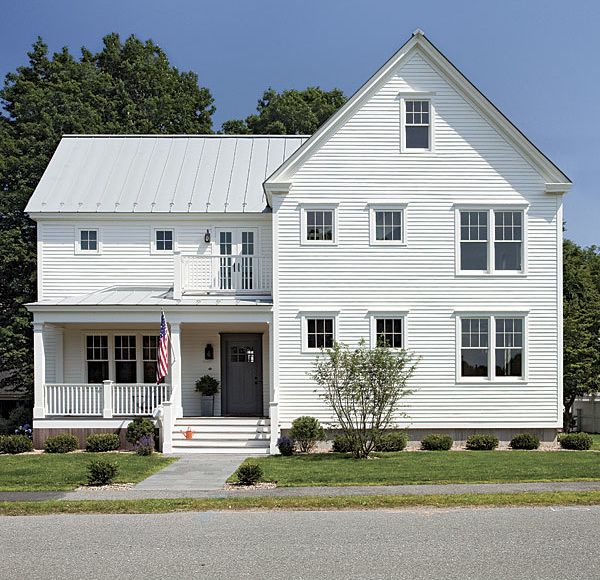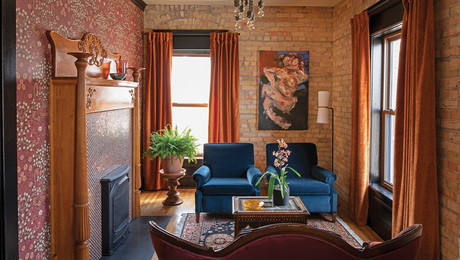Building a Healthy House
For a chemically sensitive homeowner, a cleaner indoor environment meant focusing on six key concepts.

Synopsis: Four months after moving into a house that was meticulously built to eliminate mold, biological irritants, and chemical toxins from the indoor environment, and that was landscaped to minimize pollen and other allergens, Lisa Kauffman Tharp set aside her asthma inhalers and allergy medications. This experience led her to a new career in interior design, with the mission of educating clients on how to build more healthful homes. In this article, former editor Debra Judge Silber shares Kauffman Tharp’s six key concepts for creating a cleaner indoor environment: (1) work with nature; (2) minimize ductwork; (3) build fast, dry, and tight by eliminating ground contact, using fast and efficient panelization, building to shed water, insulating well, promoting drying with an airspace, protecting from above, choosing a durable roof, and using durable siding; (4) beware of natural irritants; (5) preserve the larger environment; and (6) specify nontoxic materials and finishes.
Things that most of us barely notice have led Lisa Kauffman Tharp to take some pretty drastic action. Like repack her entire family the morning after arriving at an oceanfront vacation cottage because she awoke feeling like there was a pile of bricks on her chest. Like relocate from her home in Austin, Texas, to—quite literally—put some breathing room between her highly sensitive lungs and the native cedar trees. Like finally pull out all the stops to build a house in Concord, Mass., in the hope that it would allow her to live her chemically sensitive life in peace and in good health.
The final move seems to have paid off. Four months after moving into her new house, Kauffman Tharp was able to set aside her asthma inhalers and allergy medications. She is, she says, 80% healed thanks to a home that was meticulously crafted to eliminate mold, biological irritants, and chemical toxins from the indoor environment. For Kauffman Tharp, building a healing home went much further than eliminating carpets and coating walls with low-VOC paint. She wanted—indeed, she needed—her home to be healthful inside and out, through and through, literally from the ground up. The experience has led her to a new career in interior design, with the mission of educating clients on how to build more healthful homes, whether they are chemically sensitive or whether they simply wish to live and raise their families in a cleaner environment.
Kauffman Tharp stresses that thorough research and planning are critical to avoid missteps, to stay on course, and to control costs involved in building a healthful home. Her advice: “Do all your research before you start, or hire someone who has gone through the process who can advise you. If you have to stop and second-guess along the way, it will add to what you’ll have to pay for a healthy house.”
Before launching the project, Kauffman Tharp wrote a design brief that clearly spelled out her needs and wants: a healthful home above all, but one that was energy-efficient, space conscious, and traditional in design. Another important consideration was an in-town lot that encouraged a walking lifestyle. Achieving all those goals, she realized, would include some trade-offs and reorganizing of priorities—and here, her design brief proved invaluable. “Writing down key goals and priorities, even in simple list form, helped to guide the entire process, from lot selection to hiring the right architects and builders to the final decisions on landscaping.”
Connor Homes, a Middlebury, Vt.-based manufacturer of prefab, traditional-style houses, matched Kauffman Tharp’s desire both for an authentic New England look and panelized construction, but Boston-based Zero Energy Design was her first choice for energy efficiency. To get the best of both, she asked the two teams to work together. “The collaboration went beautifully,” she said. “Zero Energy did the original plans, and Connor made it traditional.” As general contractor, she chose eco-friendly builder Aedi Construction of Waltham, Mass. As the builder on site, Aedi was charged with the day-to-day decisions and rapid responses to any slips in the project’s nontoxic approach.
For more photos and details, click the View PDF button below:


























